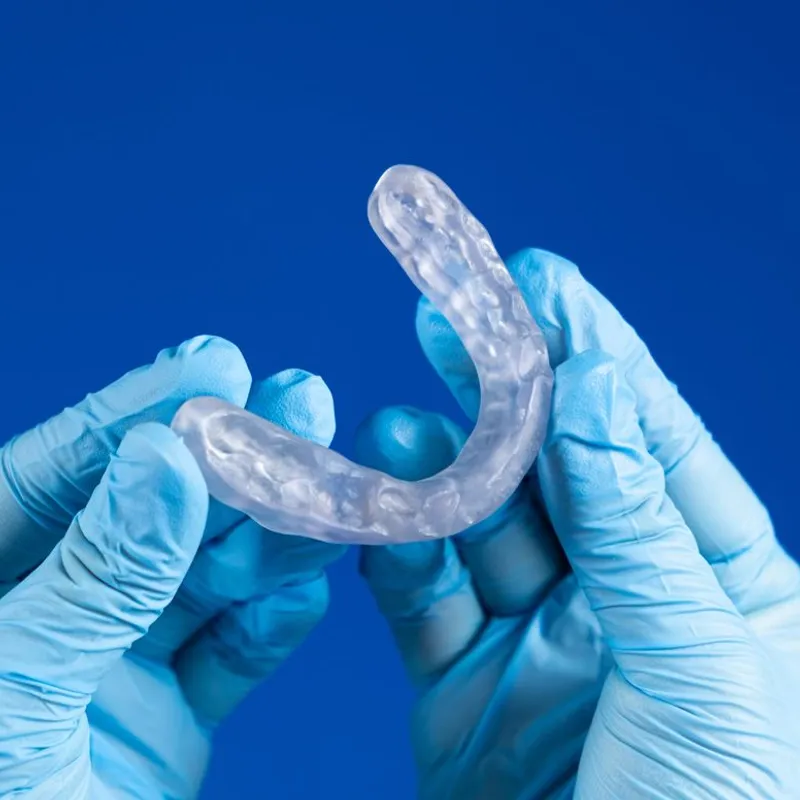
Temporomandibular disorders (TMD) comprise a complex group of conditions characterized by pain in the temporomandibular joints, chewing muscles, and related structures, often accompanied by restricted jaw movement.
Pain associated with TMD is not confined solely to the jaw area. It has been found that 85% of patients with painful TMD also suffer from other systemic disorders such as chronic fatigue syndrome, depression, anxiety, various allergies, chronic headaches, fibromyalgia, irritable bowel syndrome, neck and back pain, sleep disorders, and others.
Temporomandibular joint disorders can also be affected by connective tissue disorders and autoimmune diseases such as rheumatoid arthritis, juvenile idiopathic arthritis, psoriatic arthritis, ankylosing spondylitis, Sjogren's syndrome, joint hypermobility syndrome, systemic lupus erythematosus, scleroderma, and others.
Damage to the temporomandibular joints can impair a person's ability to speak, chew, swallow, make facial expressions, and even breathe. Temporomandibular muscle disorders often manifest together with joint problems or independently.
TMD affects both men and women, but the most severe symptoms such as disturbances in jaw movement and chronic persistent pain tend to develop specifically in women of childbearing age.
There can be numerous different causes influencing the development of TMD. Sometimes, even identifying an obvious cause can be difficult or even impossible. Some known causes include: autoimmune diseases, infections, jaw injuries, prolonged dental procedures (such as prolonged opening of the jaw), intubation during surgeries, and various forms of arthritis. The risk of developing TMD can be increased by various genetic, hormonal, psychosocial, and environmental factors. Some people who complain of jaw pain tend to attribute it to grinding their teeth, tensed jaw muscles, or clenching teeth (bruxism), but not all individuals with these tendencies develop TMD.
Symptoms and indications can vary, often affecting multiple components of the chewing system. Pain may occur in the joint or chewing muscles, potentially spreading to local or distant areas. Additionally, individuals may experience headaches in the temple region, clicking, popping, or snapping sensations in the joint during movement, with or without locking. Pain itself may also restrict movement. Some individuals may also report neck and shoulder discomfort, muscle tension, ringing in the ears (tinnitus), altered dental alignment, dizziness, and visual disturbances. Various symptoms may even arise in the absence of pain.
It's important to note: Occasional clicking or discomfort in the temporomandibular joint or muscles is common and rarely raises concern. Frequently, such issues resolve on their own after a few weeks or months.
It is crucial to conduct a comprehensive medical examination of the patient, not limited to the jaws and bite but also gathering information about the overall health condition. This helps to determine if there are any associated disorders that often coexist with or mimic TMD.
When uncertainties arise, imaging tests such as MRI or CT scans of the jaw joints are performed. Blood tests may also be conducted to identify any other medical conditions that could cause TMD symptoms.
Treatment for TMD is generally conservative, meaning it does not involve permanent changes to the teeth or jaw structures. Even in cases where the condition worsens, more aggressive treatment may not necessarily improve it.
Most individuals with TMD experience relatively mild and intermittent symptoms that often resolve on their own or with home care within a few weeks or months.
Self-care measures that can alleviate symptoms include a soft food diet, applying heat or cold to painful areas, practicing jaw rest (e.g., avoiding wide yawning, intense singing, or chewing gum), bruxism control (relaxing jaw muscles, self-monitoring), relaxation and stress management techniques, massage, gentle stretching exercises for the jaw and neck muscles (after proper instruction, these can be done at home), and over-the-counter medications like ibuprofen or naproxen.
If symptoms do not improve, physical therapy may be recommended, including manual therapy, therapeutic exercises, posture correction, dry needling, low-level laser therapy, and other modalities. An orthopedic splint (worn on the teeth) may also be used. In more complex cases, surgical treatments like arthrocentesis or arthroscopy may be considered.
While TMD has traditionally been treated by dentists, it is now recognized as a complex disorder influenced by many other body systems. Therefore, in complicated cases with associated conditions, consultations with other specialists (e.g., rheumatologists, neurologists, psychotherapists, otolaryngologists, oral and maxillofacial surgeons) may be necessary.
Medical doctors help rule out other disorders that can mimic TMD symptoms. For example, facial pain may also result from sinus or ear infections, decayed teeth, various headaches, neuralgias, neuropathies, tumors, Lyme disease, etc. They also help identify and treat other coexisting conditions associated with TMD.
If you experience symptoms of TMD (temporomandibular joint disorder) such as jaw pain, difficulty opening your mouth, and sounds accompanying movements, it is recommended to promptly consult a dentist who specializes in TMD treatment. Untreated TMD can lead to more serious health problems: chronic pain, inflammation, changes in bite, insomnia, depression, anxiety, and more.